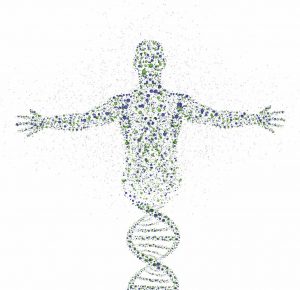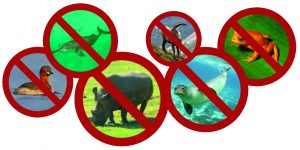 When Evel Knievel tried to jump the Snake River Canyon in 1974, stunts were kind of an oddity. “Now, that’s every Red Bull commercial,” says Grayson Schaffer ’01, editor at large at Outside Magazine and a co-founder at the production company Talweg Creative. After all, he points out, when the public has seen it all, the only way to grab the limelight is to up the ante, usually with a brand paying the way.
When Evel Knievel tried to jump the Snake River Canyon in 1974, stunts were kind of an oddity. “Now, that’s every Red Bull commercial,” says Grayson Schaffer ’01, editor at large at Outside Magazine and a co-founder at the production company Talweg Creative. After all, he points out, when the public has seen it all, the only way to grab the limelight is to up the ante, usually with a brand paying the way.
What’s Next For:
Revolutions?
Syria?
Mexico?
Japan?
The United States?
Earthquake Safety?
Climate Action?
California Water?
Climate Science?
Solar Energy?
California Fruit Farming?
Technology Investing?
Nanoscience?
Digital Storage?
Artificial Intelligence?
Cyber-Threats?
Social Media?
Space Exploration?
Science Museums?
The Sagehen?
Biodiversity?
The Blind?
Big Data?
Mental Illness?
Health Care Apps?
Maternity Care?
Etiquette?
Ballroom Dance?
Thrill Seekers?
Outdoor Recreation?
Funerals?
Writers?
Movies?
Manga?
Alt Rock?
Women in Mathematics?
Schaffer, who has covered people doing everything from climbing Everest without oxygen to kayaking down waterfalls, is frequently interviewed by national media about the world of adventure, but he knows he hasn’t seen it all—not yet. As a recent example of death-defying acts that push the limits, he points to climber Alex Honnold’s ascent of the sheer vertical wall of El Capitan without safety gear. “You’re bringing no equipment,” he says, “just your climbing shoes and a chalk bag, and you end up climbing 2,500 feet with no ropes, no way to retreat, no way to bail out—I mean, that’s pretty crazy.”
That’s an extreme case, but among people of means, Schaffer believes, the quest for thrills is becoming the ultimate expression of conspicuous consumption. “You’re seeing the benchmarks of what people view as wealth and success shifting,” he says. “Instead of a fancy car and a big mansion, people are spending huge sums of money to be able to show off an enviable Instagram feed.” Enabling such thrill-seeking, he says, will be the growing ranks of highly skilled professional guides who can provide a measure of safety for people trying their hand at everything from backcountry skiing to summiting Mount Everest.
 A world transfixed by TV shows like “Dancing with the Stars” will soon be captivated by a new look, as more gender-fluid dancers take the floor, says Denise Machin, assistant director of the Smith Campus Center and director of The Claremont Colleges Ballroom Dance Company.
A world transfixed by TV shows like “Dancing with the Stars” will soon be captivated by a new look, as more gender-fluid dancers take the floor, says Denise Machin, assistant director of the Smith Campus Center and director of The Claremont Colleges Ballroom Dance Company. The queen of good manners, Emily Post, died in 1960, but great-great grandson Daniel Post Senning ’99—one of the editors of the 19th edition of Emily Post’s Etiquette—is helping to carry forward the family business.
The queen of good manners, Emily Post, died in 1960, but great-great grandson Daniel Post Senning ’99—one of the editors of the 19th edition of Emily Post’s Etiquette—is helping to carry forward the family business. Which nation in the “developed world” spends the most on maternity care? You guessed it—the United States. And which has the highest maternal mortality rate? Same answer, and the numbers aren’t even close.
Which nation in the “developed world” spends the most on maternity care? You guessed it—the United States. And which has the highest maternal mortality rate? Same answer, and the numbers aren’t even close. Rising costs and access to health care are issues that weigh heavily on Americans and their families. These issues deepen when it comes to mental health. Common mental illnesses can be extraordinarily disabling, and yet, many patients do not receive treatment.
Rising costs and access to health care are issues that weigh heavily on Americans and their families. These issues deepen when it comes to mental health. Common mental illnesses can be extraordinarily disabling, and yet, many patients do not receive treatment. What’s next in the treatment of mental illness will be a direct outcome of what’s now, according to Pomona College Professor of Psychology Sara Masland. Two developments in the field may, over time, transform treatment of psychological disorders.
What’s next in the treatment of mental illness will be a direct outcome of what’s now, according to Pomona College Professor of Psychology Sara Masland. Two developments in the field may, over time, transform treatment of psychological disorders. For many of us, the words “big data” have taken on sinister connotations, evoking stories of data breaches, manipulation and abuse. But in medicine and pharmacology, Jan Lethen ’93 believes big data is already saving lives—and in the future, it’s going to get even bigger and save many more.
For many of us, the words “big data” have taken on sinister connotations, evoking stories of data breaches, manipulation and abuse. But in medicine and pharmacology, Jan Lethen ’93 believes big data is already saving lives—and in the future, it’s going to get even bigger and save many more. The 1970s TV show The Six Million Dollar Man (which now seems quaintly underpriced in today’s dollars) brought the word “bionic” into general use, with sci-fi connotations that it has never completely shed. But one area of prosthetics where fact has begun to overtake fiction is in the world of bionic vision. In 2015, the Honolulu-based ophthalmologist Dr. Gregg Kokame ’78 was the first physician in the Asia-Pacific region to implant a bionic eye, giving a patient who had been blind from hereditary retinal disease the gift of sight.
The 1970s TV show The Six Million Dollar Man (which now seems quaintly underpriced in today’s dollars) brought the word “bionic” into general use, with sci-fi connotations that it has never completely shed. But one area of prosthetics where fact has begun to overtake fiction is in the world of bionic vision. In 2015, the Honolulu-based ophthalmologist Dr. Gregg Kokame ’78 was the first physician in the Asia-Pacific region to implant a bionic eye, giving a patient who had been blind from hereditary retinal disease the gift of sight. We are in the middle of a mass extinction event, says Professor of Biology Nina Karnovsky, and, this time, it’s our fault.
We are in the middle of a mass extinction event, says Professor of Biology Nina Karnovsky, and, this time, it’s our fault. Pomona College’s mascot, the sagehen—the sage grouse in the real world—needs a “lek” up.
Pomona College’s mascot, the sagehen—the sage grouse in the real world—needs a “lek” up.